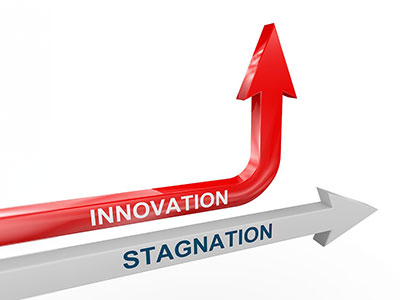

In talking with our colleagues and touring QC Manufacturing, the maker of QuietCool, innovation was top of mind. I was excited about the dramatic progress the team has made with a focus on innovation. As described on their website, “Innovation is a standard that is set in our company. Our company was founded on innovation and we vowed long ago to never stop innovating. We believe in innovative people, systems, products, and services to achieve the best possible result. Our promise to innovate has allowed us to create the most eco-friendly home product in the world.”
In today’s VUCA (volatility, uncertainty, complexity, ambiguity) intensified world, innovation is not only desired, it is required. As mentioned in our article, “Innovation to Thrive in the Next Decade“, our most successful clients have the highest levels of growth, profitability, employee engagement and success. For example, QC was an Inc 5000 fastest growing company seven years in a row. More importantly, their teams are engaged, dedicated, and constantly looking for opportunities for improvement.
Why Innovation Is of Paramount Importance
There is no doubt that innovation is of paramount importance. Post pandemic, there is heightened geopolitical risk, and there is a renewed awareness of the risk of dependency on partners you aren’t sure you can count on. For example, as we discussed in our MPO article, critical industries such as medtech must be protected. As companies must pursue security of product supply yet cannot afford substantial increases in cost especially with the dramatic rise in interest rates, the solution is to innovate.
For example, when I was a VP of Operations and Supply Chain for a private equity backed mid-market manufacturer, innovation was the best route to success. A small-medium sized privately-owned manufacturer purchased a division of a large public organization and a small entrepreneurial company around during the timeframe of Y2K concerns (thus, they went live on a new ERP system) and rising gas prices (which negatively impacted the #1 contributor to product cost). We were left with a botched ERP implementation with poor service to customers, mixed up product lines and prices, and cash constrained. We had to innovate to survive – and then thrive. From the use of ERP to product development to cost reduction programs, we collaboratively innovated. The results speak for themselves. We turned around the company, relaunched product lines, grew the business, offset the price increases and increased EBITDA.
Innovate to Thrive
There are many strategies to achieve innovation success. A few that pop to mind include:
- People & Culture: It starts with people. You can’t have success with customers (at least long-term success) if you don’t focus on people and culture first. We have yet to see clients with happy customers that have unhappy employees. For example, are you rewarding people for ideas, especially ideas that fail? Failure is a normal part of success. Edison failed almost 3000 times before coming up with the design for the light bulb. Read additional strategies for success in our recent article.
- Lean philosophy: You cannot talk about innovation without bringing up the lean philosophy. With that said, conducting a lean event like a Kaizen will not solve your issues. Lean is a culture change with common sense ideas such as engaging your team in the solution, focusing on what the customer values, incorporating flexibility for changing circumstances, and trialing new ideas.
- Process innovation: Instead of doing things as you have always done them, our best clients innovate. There is continuous improvement and dramatic change. Both are required to be successful. Continuous improvement becomes a part of successful cultures; however, it is no longer enough. Executives must keep an eye on the horizon as every now and then, a shift change must occur. This is also referred to as disruptive innovation. My consulting mentor Alan Weiss calls this concept a “sharp right turn”. One of my business mentors encouraged this with dramatic change by setting large goals. The key is not to simply provide seemingly unrealistic, large goals as they would be demotivating. On the other hand, a collaborative, exciting large goal that constantly evolves as the team learns will yield success.
- Product innovation: Similarly, no company will be successful if not focused on future customer needs. Riding success might be attractive, but if you aren’t growing, you are declining. Most innovation is not “new”. New is no easy task. How many sticky pads can be developed? Instead, most innovation is related to seeing opportunities, taking advantage of events and/or customer needs (such as clean and timely taxis pre-Uber), recombining and /or repackaging a product in a way that better meets changing customer needs etc.
Owner operated companies are selling off at a quick pace with the aging of the Baby Boomer workforce. Geopolitical risks, regulation issues, sustainability initiatives, supply chain risks, and cyber risks are driving significant changes. High-skilled talent is scarce. Technology is changing at an accelerated pace. VUCA (volatility, uncertainty, complexity, ambiguity) is at a high level. Navigating the turbulent economic environment is challenging. Given this backdrop, the weak will decline while the proactive and innovative will thrive. In fact, the companies that innovate are likely to leapfrog the competition and become market leaders for decades to come.
If you are interested in reading more on this topic:
Although Manufacturing Has Declined, the Smart are Planning for a Renaissance


